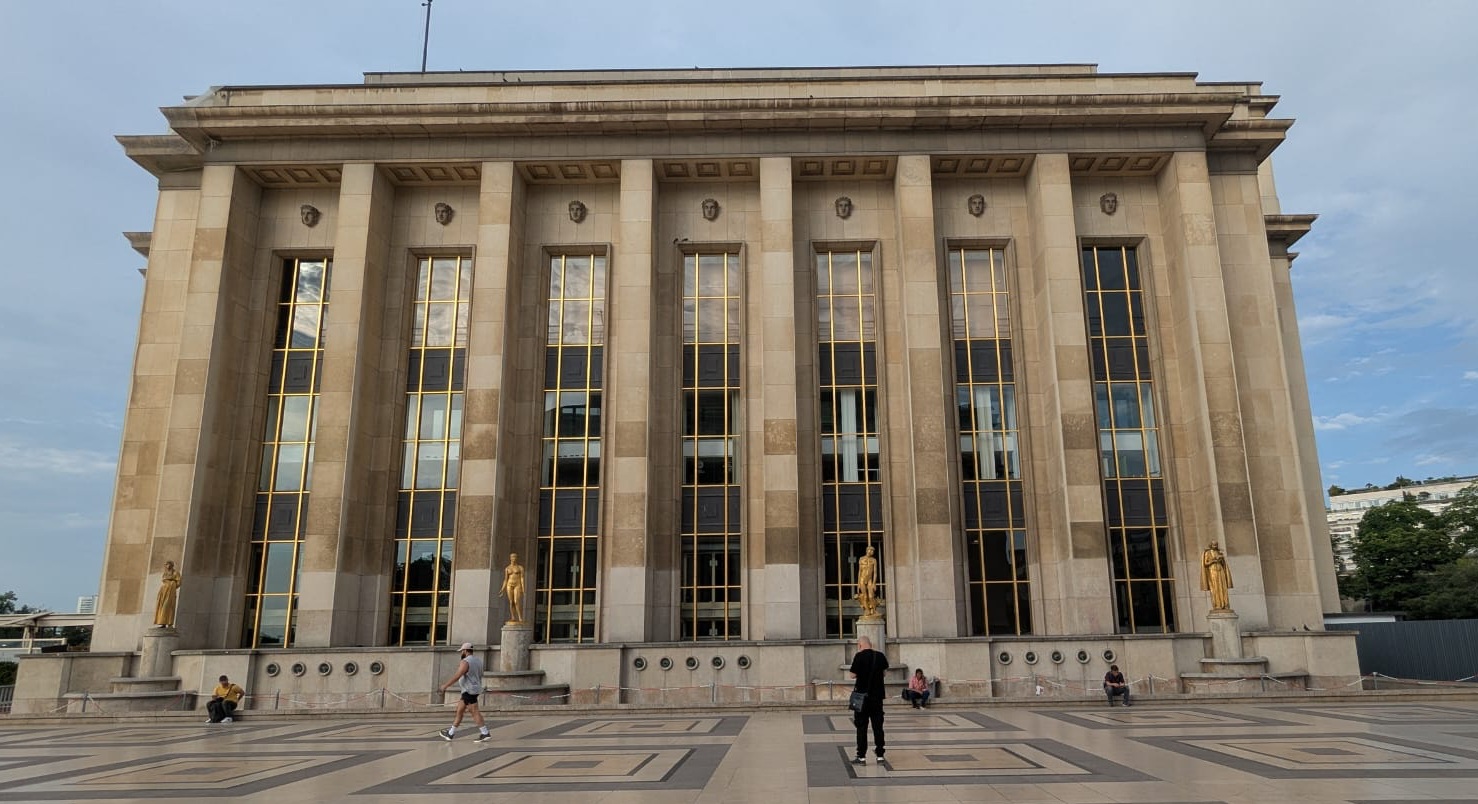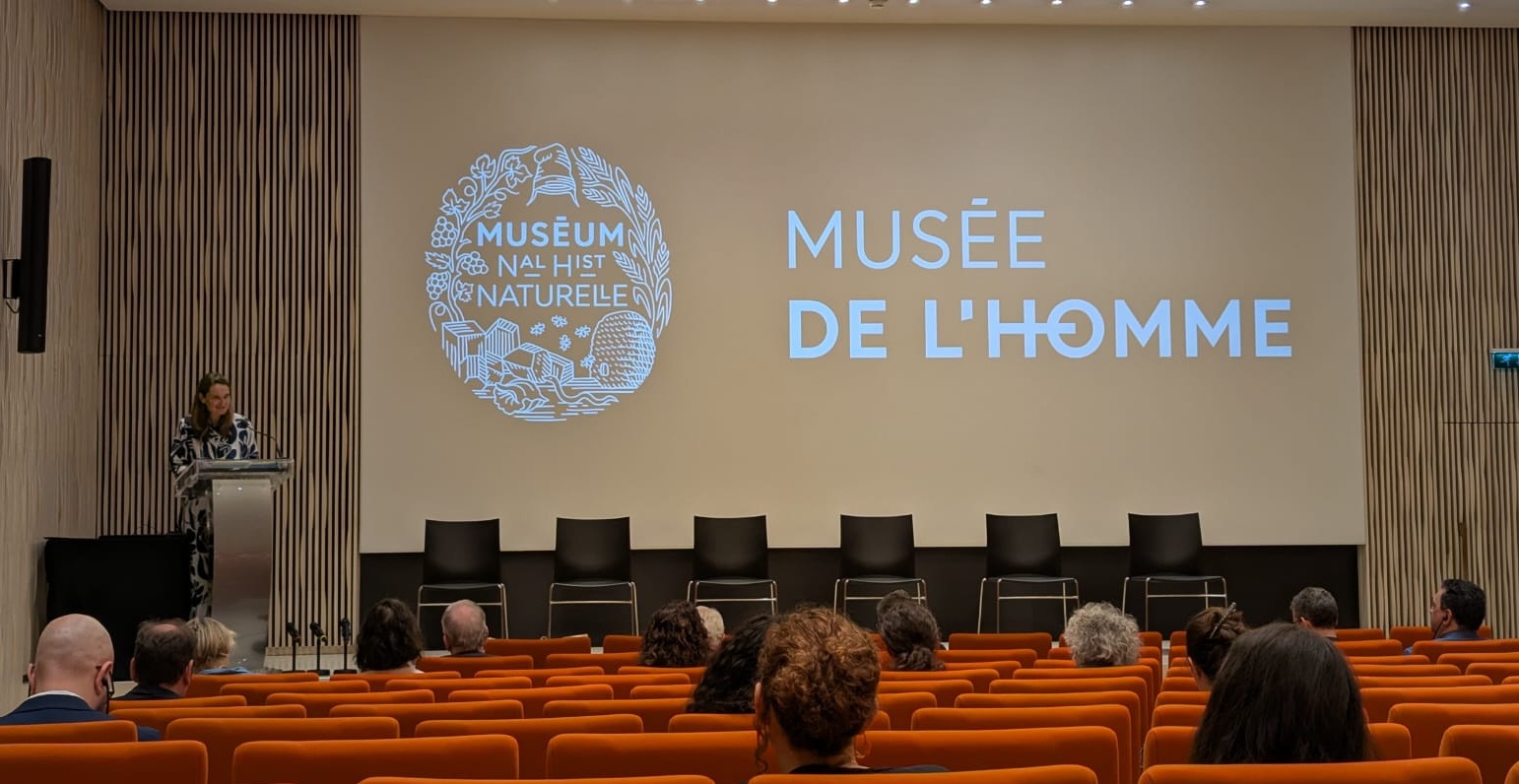

The Museum of Man boasts a collection of approximately 700 prehistoric objects, 28,000 biological anthropology records, and 6,000 cultural anthropology artifacts (photo: Heitor Shimizu/Agência FAPESP)
In partnership with FAPESP, the National Museum of Natural History of France is holding a seminar for scientists, museologists, and representatives of indigenous communities to discuss new visions and missions for these institutions.
In partnership with FAPESP, the National Museum of Natural History of France is holding a seminar for scientists, museologists, and representatives of indigenous communities to discuss new visions and missions for these institutions.

The Museum of Man boasts a collection of approximately 700 prehistoric objects, 28,000 biological anthropology records, and 6,000 cultural anthropology artifacts (photo: Heitor Shimizu/Agência FAPESP)
By Heitor Shimizu, from Paris | Agência FAPESP – The France-Brazil Museology Seminar began on June 12th at the Museum of Man in Paris. The National Museum of Natural History (MNHN) organized the event in partnership with FAPESP and the University of São Paulo (USP). It is part of the program for FAPESP Week France 2025.
“With the theme ‘New Visions and New Missions for Natural History Museums,’ this seminar is the result of several months of work and collaboration between teams from FAPESP and the MNHN. The two-day program brings together a wide range of actors involved in museological approaches: researchers, museologists, and representatives of indigenous communities,” said Aurélie Clemente-Ruiz, director of the Museum of Man.
“The theme of the seminar is highly relevant to our space, as this year we’re celebrating the tenth anniversary of the Museum of Man’s reopening after its renovation. Over two days – today here at the Museum of Man and tomorrow at the Gallery of Comparative Anatomy and Paleontology – we’ll reflect on the role of natural history museums in the 21st century. We’ll discuss issues such as the role of museums in research and preservation, ways of thinking about nature and life forms, museums and the Anthropocene, as well as new museological approaches and Franco-Brazilian collaboration,” said Clemente-Ruiz at the opening of the event.

Aurélie Clemente-Ruiz, director of the Museum of Man, which was reopened ten years ago after undergoing renovation (photo: Heitor Shimizu/Agência FAPESP)
Next, Marco Antonio Zago, the president of FAPESP, spoke about the objectives and expectations of the seminar.
“The first is to reflect on what a natural history museum should be in the 21st century, at a time when we’re facing rapid biodiversity loss and conflicting views on how to preserve it. Along with this, in many respects and areas, there are demands for the repatriation of heritage that’s outside its place of origin. Another important point is to ensure the participation of traditional and indigenous communities in the preservation of collections and museography, as well as understanding the role they can or should play in today’s museums," he said.
“We also need to reevaluate the relationship between museums and the public – to understand what kind of experience museums should provide their visitors. It’s necessary to modernize museographic practice. What should be done with traditional and valuable collections? And with objects and artifacts that came, for example, from Brazil to Europe during the colonial period? These are issues that need to be discussed so that we can find solutions,” he continued.

“We need to reevaluate the relationship between museums and the public” (photo: Heitor Shimizu/Agência FAPESP)
According to Zago, museums should not merely be seen as guardians of precious objects, artifacts from the past, or biological and mineral specimens. “They need to play a prominent role in the contemporary understanding of society and cultures, as well as the relationships between them. They should also be centers for advancing knowledge, education, and dialogue with the general public.”
The president of FAPESP cited the Foundation’s support for the recent creation of the Center for Documentation of Indigenous Languages and Cultures as an example of such an initiative. The center involves the Museum of the Portuguese Language and USP’s Museum of Archaeology and Ethnology (MAE), as well as several partners, including the National Museum of Indigenous Peoples and the Ministry of Indigenous Peoples.
“As you know, we’re now in the Decade of Indigenous Languages, declared by UNESCO [United Nations Educational, Scientific and Cultural Organization]. In Brazil, we have 274 indigenous languages, of which about 40 are currently at risk of extinction. Obviously, the documentation and study of languages are firmly linked to the documentation of cultures, as language is one of the expressions of culture – both its material and immaterial representations,” said the president of FAPESP.
Museum of Man
Clemente-Ruiz pointed out that the discussion on the role of natural history museums is part of an ongoing project at the Museum of Man, “with the aim of rethinking certain spaces and reinventing them, always with the idea of showing science in motion and participating in contemporary debates in society.” She also spoke about the history and importance of the institution.
“In the 1930s, the new director at the time, Paul Rivet, decided to create a museum dedicated to research, teaching, and dissemination. He began with an important collection to carry out this project, based on the valuable collection of the Trocadéro Museum of Ethnography, to which he added the collections of the anthropology and prehistory gallery of the National Museum of Natural History,” she said. “Since then, the Museum of Man has been part of the National Museum of Natural History, which has an even longer history: in 2026, we’ll celebrate the 400th anniversary of its founding by a decree of Louis XIII, who wanted to establish a garden of medicinal plants.”
According to Clemente-Ruiz, at the time, Louis XIII sought to modernize the teaching and practice of medicine in Paris by promoting the study of three disciplines: botany, anatomy, and chemistry. The free courses were open to all and were a great success. In the 18th century, the museum expanded its focus to include natural history, becoming the primary center for disseminating knowledge in these fields.
“In 1793, after the French Revolution, it officially became the National Museum of Natural History, with 12 professorships. The first enthusiasts, including renowned scientists of the time, began analyzing and comparing species brought to Paris from all over the world. Throughout the 19th century, scientific studies multiplied, and the fields of research diversified to encompass chemistry, prehistory, archaeology, paleontology, geology, and anthropology. All of these disciplines related to the living world are now studied at the museum and disseminated at its various sites throughout France,” she said.
Clemente-Ruiz explained that the MNHN currently houses one of the world’s largest natural history collections, with over 68 million inventoried items and more than two million documents. “When the Museum of Man was inaugurated in 1938, integrating different collections, it became part of the tradition of exploration, discovery, and research initiated by the National Museum. The Museum of Man is a space that emphasizes the unity of humanity while affirming its cultural diversity,” she said.
The Museum of Man boasts a collection of approximately 700 prehistoric objects, 28,000 biological anthropology records, and 6,000 cultural anthropology artifacts. ”Most are stored in our reserves at the Palais de Chaillot. However, 1,800 pieces are on display in the permanent gallery, which you’ll be able to visit at the end of today’s debates,” she told those attending the seminar.
For more news and information about FAPESP Week France, visit: fapesp.br/week/2025/france.
Republish
The Agency FAPESP licenses news via Creative Commons (CC-BY-NC-ND) so that they can be republished free of charge and in a simple way by other digital or printed vehicles. Agência FAPESP must be credited as the source of the content being republished and the name of the reporter (if any) must be attributed. Using the HMTL button below allows compliance with these rules, detailed in Digital Republishing Policy FAPESP.





